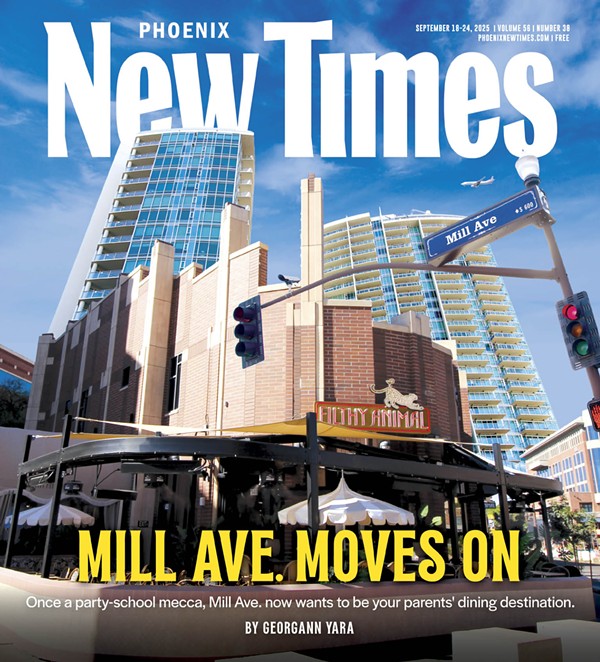Not too long into Josie Rourke’s intimate, piercing Mary Queen of Scots, we get to see Queen Elizabeth I get lost doing precisely what we’re doing: staring at the face of Saoirse Ronan, captivated by its striking openness, caught up in trying to divine what strength and passions fire behind those icy blue eyes. Margot Robbie plays Elizabeth, the daughter of Henry VIII and Anne Boleyn who ruled England for almost a half-century; Ronan stars as Elizabeth’s royal cousin, Mary Stuart, the young queen of that ungovernable jewel Scotland. It’s a painting of the face of Mary that we see Elizabeth study, one queen attempting to take the measure of another. Elizabeth notes that she sees strength and resolve in Mary, whom she has never met. And, of course, she sees great beauty — though she also acknowledges the possibility that she’s not seeing anything like the real Mary’s face. Perhaps the painter has lied.
The painter hasn’t, of course. But that Elizabeth considers the possibility gets at the political truths at the heart of Rourke’s film. A woman ruling over a court of men, Elizabeth understands better than anyone else alive the power vested in a woman’s visage, and she regards this rendering of Mary’s with an appraiser’s eye. She sees what appears to be a most effective instrument. Soon a pox will ravage Eilzabeth’s own face, and she will mask its details with thick swaths of white makeup, the monarch as mummer — and as her own painter. She makes herself, she says, more man than woman. Mary, meanwhile, favors a natural look, emphasizing her youthful radiance, her womanliness.
Guess which ruler eventually gets marched to the gallows?
The actresses share only one scene in the film, but Mary Queen of Scots sets them up in counterpoint, two divergent approaches to the question of how women who wield power can actually govern the men around them. The queens fascinate each other and each seem, to themselves and their courts, in constant implied comparison. Mary has a legitimate claim to the crown that Elizabeth bears, but Elizabeth has all the might of England behind her and is savvy about keeping it. Yet she has little interest in that first prerogative of royalty: marrying smartly and birthing an heir. Young Mary snarls that Elizabeth is “barren” and then beds and weds a cousin, Henry Stuart (a preening Jack Lowden), soon having a son with him despite his pronounced disinterest in sex with women.
Despite her power and beauty, Mary is cuckolded by Henry, betrayed by him in every other way, and beaten by him, too. Her advisers plot against her; her country’s priests call her whore. Adapted by Beau Willimon from a Mary Stuart biography by John Guy, Rourke’s film examines men’s hostility to a woman with power. A sense of agonized inevitability grows even as Mary seems to triumph, suppressing a rebellion, bearing an heir and convincing Elizabeth via letter that the infant should inherit the thrones of both kingdoms unless Elizabeth one day bears a successor. We see Mary harden, over a couple of years, from a playful near-child queen who giggles with her handmaidens to a stern-countenanced ruler adept at dressing down the men who question her. Yet those men’s disloyalty is not limited to disagreeing with her. They object to the very idea of being ruled by a fire-haired beauty, and no scheme to seize her power for themselves is too underhanded.
It’s a film of two faces, one exposed and glowing, the other blotted out entirely, its vulnerability painted over. (The men, generally, are bearded and somewhat hard to tell apart.) Both leads reveal aching souls beneath the regal toughness, but it’s only Robbie’s Elizabeth who intuits early the danger of being free, natural, girlish, sexual — the danger of loving a man who after marriage would have to be called king.
Many other political factors fed the downfall of Scotland’s Queen Mary, of course, including her airily ecumenical disinterest in the differences between Catholics and Protestants. Rourke’s film doesn’t reduce its queens’ reign to a compare-and-contrast study in femininity. But it emphasizes in every scene the ways that the fact of their womanhood shaped every aspect of their comportment — and of their courts’ response to them.
As befits a glossy period piece, the photography and finery here are splendid; Mary’s jacketed, corseted gowns are a parade of wonders, and the ever increasing severity of Elizabeth’s presentation again and again proves shocking. This tragedy skips freely over large passages of time, sometimes omitting context, not bothering to chart, with much precision, the stages of the queens’ development. Rourke, a storied British theater director, checks in on who they’ve become rather than who they’re becoming. The answer is a continual surprise, even as the terrible ending is never in doubt. A woman born to power in that world was also born to have it stripped from her — and so Elizabeth sets herself to becoming something not so clearly identifiable as woman. The tragedy is not just that Mary faces the fate that she does — it’s that the only two women in the world who share this experience, who could help each other make sense of it, only meet once their fates have been set.

Audio By Carbonatix
[
{
"name": "GPT - Billboard - Slot Inline - Content - Labeled - No Desktop",
"component": "21251496",
"insertPoint": "2",
"requiredCountToDisplay": "2"
},{
"name": "STN Player - Float - Mobile Only ",
"component": "21327862",
"insertPoint": "2",
"requiredCountToDisplay": "2"
},{
"name": "Editor Picks",
"component": "16759093",
"insertPoint": "4",
"requiredCountToDisplay": "1"
},{
"name": "Inline Links",
"component": "17980324",
"insertPoint": "8th",
"startingPoint": 8,
"requiredCountToDisplay": "7",
"maxInsertions": 25
},{
"name": "GPT - 2x Rectangles Desktop, Tower on Mobile - Labeled",
"component": "21934225",
"insertPoint": "8th",
"startingPoint": 8,
"requiredCountToDisplay": "7",
"maxInsertions": 25
},{
"name": "Inline Links",
"component": "17980324",
"insertPoint": "8th",
"startingPoint": 12,
"requiredCountToDisplay": "11",
"maxInsertions": 25
},{
"name": "GPT - Leaderboard to Tower - Slot Auto-select - Labeled",
"component": "17012245",
"insertPoint": "8th",
"startingPoint": 12,
"requiredCountToDisplay": "11",
"maxInsertions": 25
}
]








